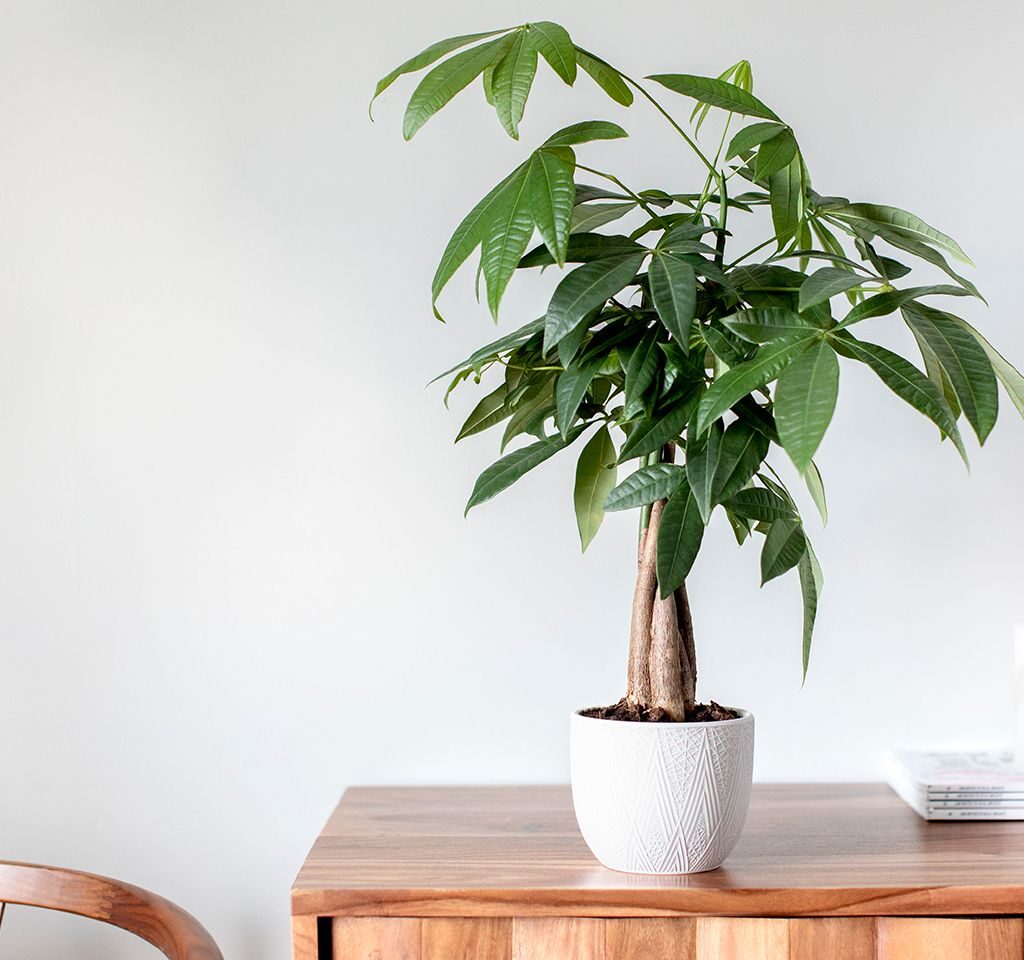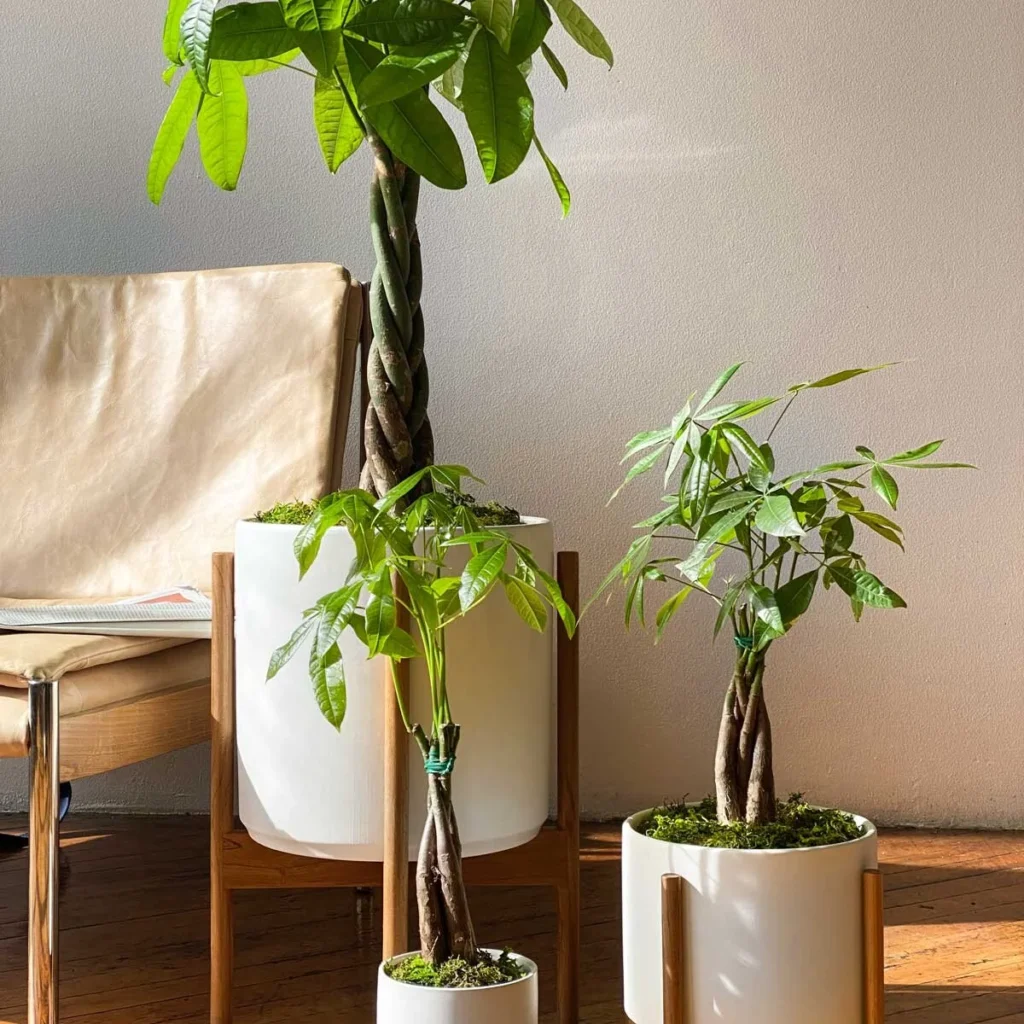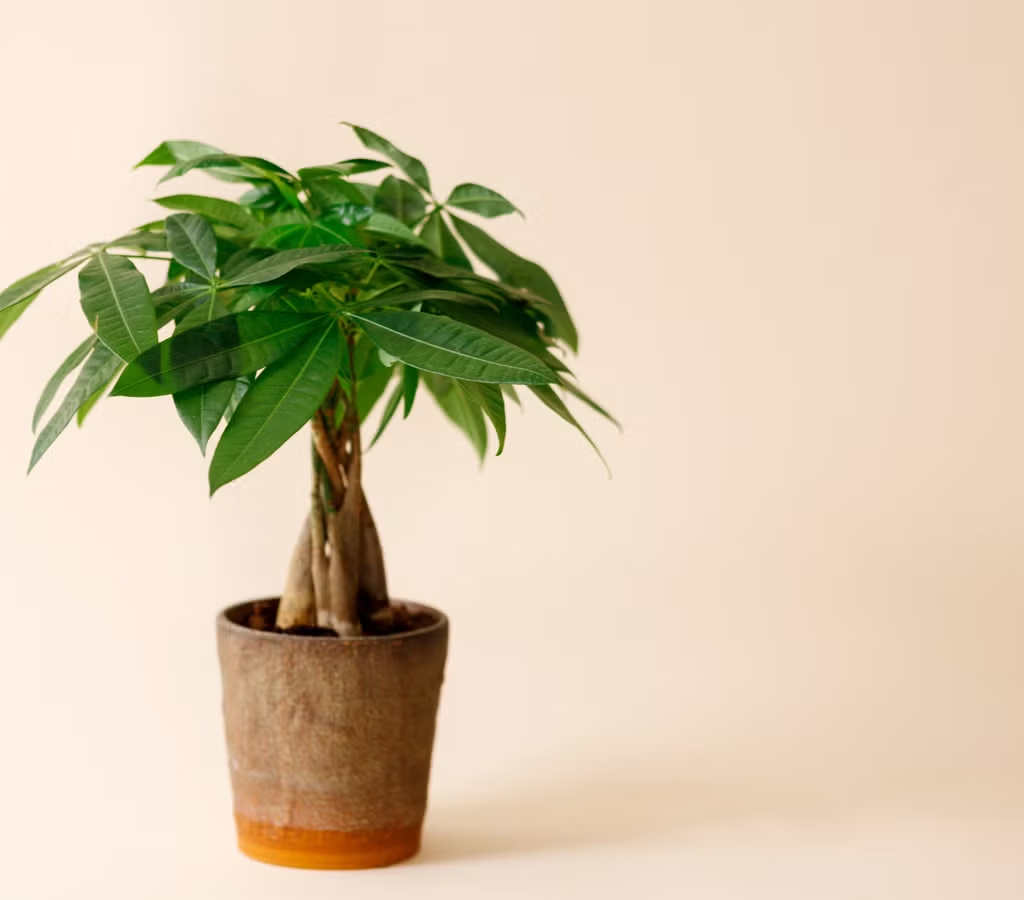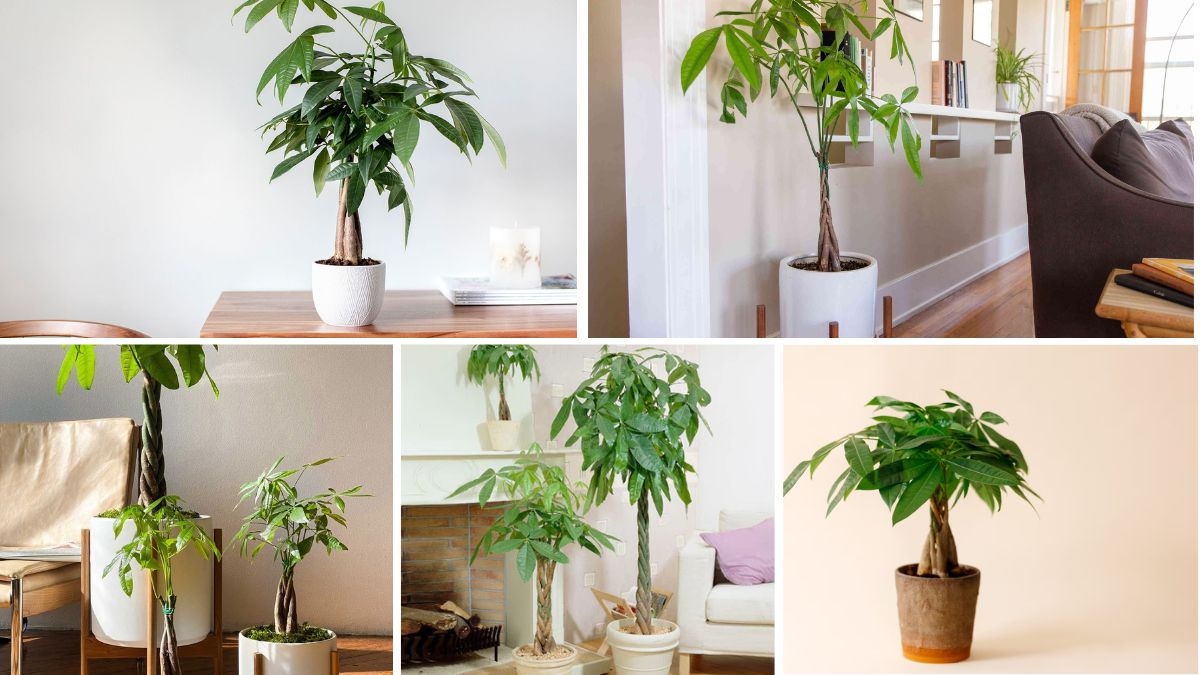The Money Tree (Pachira aquatica) has long been cherished as a symbol of good fortune, wealth, and positive energy. Popular in Feng Shui practices, this elegant indoor plant features braided trunks and lush, green leaves that not only beautify your home but also bring a touch of nature’s charm indoors. Many believe that placing a Money Tree in the right location can invite prosperity and harmony. However, beyond its symbolism, the plant is also quite hardy, making it an excellent choice for beginners.
If you want your Money Tree to thrive and keep bringing luck into your life, you need to provide the right care. This guide will walk you through everything you need to know about growing and maintaining a healthy Money Tree, from choosing the perfect location to watering and feeding it the right way.
1. Choosing the Right Location for Your Money Tree

The first step to a healthy Money Tree is finding the right spot in your home.
- Light Needs: Money Trees prefer bright, indirect sunlight. Placing them near an east-facing or south-facing window is ideal, but make sure the sunlight is filtered through a sheer curtain. Too much direct sunlight can scorch the leaves, while too little light may cause slow growth.
- Feng Shui Placement: If you’re following Feng Shui principles, place your Money Tree in the wealth corner of your home, which is typically the southeast area of your living space.
- Avoid Drafts: Keep the plant away from cold drafts, air conditioners, and heaters, as sudden temperature changes can stress it.
Pro Tip: If natural light is limited, use a full-spectrum grow light to keep your plant healthy.
2. Ideal Temperature and Humidity

Money Trees thrive in warm, humid environments—similar to their native tropical habitat in Central and South America.
- Temperature Range: Keep your Money Tree in a temperature range of 65°F to 80°F (18°C to 27°C).
- Humidity: They enjoy moderate to high humidity. If your home’s air is dry, especially in winter, place a humidifier nearby or set the pot on a tray filled with water and pebbles to increase moisture around the plant.
- Avoid Extremes: Never let your plant experience temperatures below 50°F (10°C), as it can damage the leaves and stunt growth.
3. Watering Your Money Tree Correctly

Overwatering is the most common mistake new plant parents make with Money Trees.
- Watering Schedule: Water your plant thoroughly once the top 2–4 inches of soil feel dry. On average, this is about once every 1–2 weeks, but it depends on your indoor climate.
- Drainage: Always ensure the pot has drainage holes. Waterlogged soil can lead to root rot, which is deadly for Money Trees.
- Seasonal Adjustment: During the active growing season (spring and summer), you might need to water more frequently. In fall and winter, reduce watering as growth slows.
- Water Type: Use room-temperature filtered water or let tap water sit overnight to remove chlorine before watering.
Pro Tip: If you notice yellow leaves, it might be a sign of overwatering. Brown, crispy leaves often mean underwatering.
4. Soil and Pot Requirements

Healthy soil is essential for a strong Money Tree root system.
- Soil Type: Use a well-draining potting mix—a blend designed for cacti or succulents works well. You can also make your own by mixing regular potting soil with sand and perlite.
- Pot Choice: Choose a pot that is 1–2 inches larger than the root ball and has drainage holes. Terracotta pots are a great option because they allow excess moisture to evaporate.
- Repotting: Repot your Money Tree every 2–3 years or when roots start growing out of the drainage holes. This refreshes the soil and gives the plant more space to grow.
5. Fertilizing for Growth and Prosperity
Just like any plant, a Money Tree needs nutrients to thrive.
- Fertilizer Type: Use a balanced, water-soluble fertilizer (10-10-10 or 20-20-20) every 4–6 weeks during the growing season (spring and summer).
- Winter Care: Skip fertilizing during the dormant months (fall and winter) to avoid stressing the plant.
- Natural Fertilizers: You can also use diluted compost tea or banana peel water as an organic alternative.
6. Pruning and Braiding the Trunk

Pruning keeps your Money Tree looking beautiful and encourages healthy growth.
- When to Prune: Trim away yellow or damaged leaves anytime you see them. For shaping, prune during spring or summer when the plant is actively growing.
- How to Prune: Use clean, sharp scissors to cut just above a leaf node.
- Braiding Tips: If you want to braid your Money Tree’s trunk, start when the plant is young and flexible. Gently weave the stems together, securing them loosely with soft plant ties.
7. Common Problems and How to Fix Them
Even a lucky plant can face challenges. Here’s how to handle them:
- Yellow Leaves: Usually caused by overwatering. Let the soil dry out before watering again.
- Brown Leaf Edges: Indicates low humidity or underwatering. Mist the leaves or increase humidity.
- Leaf Drop: Can happen if the plant is moved suddenly, exposed to drafts, or overwatered.
- Pests: Watch for spider mites, mealybugs, and aphids. Remove them by wiping leaves with a solution of mild soap and water.
8. Propagating Your Money Tree
If you want more Money Trees or wish to gift one to a friend, propagation is easy.
- Stem Cuttings: Cut a healthy stem with at least two leaf nodes. Place it in water until roots form, then plant it in soil.
- Air Layering: Wrap a section of the stem with moist moss, cover it with plastic wrap, and wait for roots to develop before cutting and planting.
9. Symbolism and Feng Shui Benefits
In Feng Shui, the Money Tree is more than just a decorative plant—it’s believed to attract wealth, luck, and positive energy.
- Five Leaves: Each stalk typically has five leaves, symbolizing the five elements—wood, water, earth, fire, and metal.
- Gift of Good Fortune: It’s a popular housewarming or business-opening gift in Asian cultures.
- Wealth Corner Placement: Placing the plant in the southeast corner of your home or office is believed to activate prosperity energy.
10. Seasonal Care Tips
Your Money Tree’s needs change with the seasons.
- Spring and Summer: This is the active growth period. Water regularly, fertilize monthly, and prune as needed.
- Fall and Winter: Growth slows, so reduce watering, stop fertilizing, and keep the plant warm.
- Holiday Decor: You can gently decorate your Money Tree with ribbons or charms to enhance its lucky energy during festivals.
Conclusion
Caring for a Money Tree is a rewarding experience—both for its beauty and the symbolism it brings into your life. By providing the right amount of light, water, nutrients, and love, your Money Tree will stay healthy and lush for years. Whether you grow it for its Feng Shui benefits or simply as a stunning indoor plant, the Money Tree is sure to bring a sense of peace, prosperity, and joy into your home.
Remember: A thriving plant equals thriving energy. Treat your Money Tree well, and it just might return the favor by bringing a little extra luck your way.




Leave A Comment